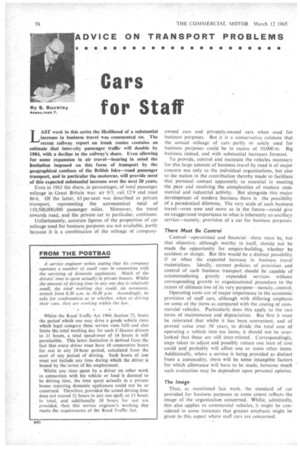FROM THE POSTBAG • A service engineer writes stating that
Page 78

If you've noticed an error in this article please click here to report it so we can fix it.
his company operates a number of small vans in connection with the servicing of domestic appliances. Much of the drivers.' time is spent aCtually in private houses. Whilst the amount of driving time in any one day is relatively small, the total working day could, on occasions, stretch from 8.30 a.M. to 10.30 p.m. Accordingly, he asks for confirmation as to whether, when so driving their vans, they are working within the law.
Whilst the Road Traffic Act 1960, Section 73, limits the period which one may drive a goods vehicle (into which legal category these service vans fall) and also limits the total working day for such C-licence drivers to 11 hours, a total spead-over of 14 hours is still permissible. •This latter limitation is derived from the fact that every driver must have 10 consecutive hours for rest in any 24-hour period, calculated from the start of any period of driving. Such hours of rest must not include any time during which the driver is bound by the terms of his employment.
Whilst any time spent by a driver on other work in• connection with his vehicle or load is deemed to be driving time, the time spent actually in a private house repairing domestic appliances could not be so construed. Therefore, provided the actual driving time does not exceed 51 hours in any one spell, or 11 hours in total, and additionally 10 hours for rest are provided, then this service engineer's working day meets the requirements of the Road Traffic" Act.
























































































































